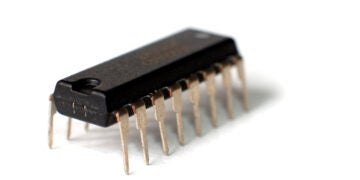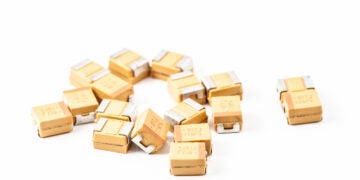
As phones, appliances, automobiles, and virtually all other products get smarter, building electronic circuit boards to meet performance and functionality demands becomes more challenging. Meeting these challenges requires more complex designs, more capable design software, and better manufacturing processes.
Competing in this constantly evolving market necessitates knowing which PCBA manufacturing trends are and will have the most impact on your component selections and board layout decisions in the future.
The PCBA Manufacturing Industry Trends Making an Impact
Despite the challenges of component shortages, shutdowns due to the COVID-19 pandemic, and the supply chain bottleneck, the PCB market will reach $70 billion in 2022 and grow to more than $86 billion by 2026, according to some predictions. Although this is exciting news, the road to reaching these goals will consist of innovations and changes to all phases of the PCBA generation process. This includes selecting and incorporating newer, more functional components, emphasizing CAD file accuracy and standardization, developing more creative designs and using more capable software design tools, increased software and hardware integration during development, and more efficient manufacturing processes.
Changes in board manufacturing will include new equipment, advanced processing, and more emphasis on the engineer-CM relationship. Choosing the right board manufacturing partner requires discernment as it affects the quality of your board builds, turnaround times and ability to satisfy customers and gain market share. And looking ahead, a significant factor when evaluating a CM should be how their process aligns with the most impactful PCB manufacturing industry trends.
Trend #1: Automation and Robotics
Building circuit boards is a three-stage process (fabrication, component procurement, and assembly) consisting of well-defined steps. However, various techniques are available for many of the steps, and board quality and speed of board spin are essential factors for your CM’s choice of method. Attempting to optimize these metrics has caused some manufacturers to minimize reliance upon manual expertise and ramp up their process automation. This trend is likely to grow as programmable robots add precision and agility, while minimizing or eliminating common errors. Levering this improvement requires that design selections are synchronized with your CM’s DFM and DFA to optimize processing and maximize speed and yield rates.
Trend #2: Software-Based Processing and IoT
Hand-in-hand with increased automation is more software utilization. In addition, manufacturing facilities adopt industry 5.0 practices for data exchange within and between facilities. There are many advantages to software-based PCBA manufacturing, especially for assembly. For example, quality control measures, such as automated optical inspection – used to identify flaws or contamination that would go undetected by human visual inspection – negate operators’ need to handle boards physically. Designing boards for IoT requires optimizing layout for sensor data acquisition and wireless interconnectivity. Emphasizing these skills now will help you prepare for what’s coming.
Trend #3: Engineer-Manufacturer Integration
Virtually everyone involved with PCB development and/or production understands the importance of engineers using the DFM, DFA, and DFT rules and guidelines set by the CM to build their boards. However, it is also essential that your CM understands your design intent, including limitations on options that may simplify manufacturing but adversely affect performance. An open and transparent or white-box type of engineer-CM integration promotes partnerships and reliability with a preferred manufacturer; instead of each board build being an adventure.
Trend #4 On-Demand Production
Before the recent volatility that affected the PCB industry, many developers and manufacturers opted to employ lean manufacturing practices to improve competitiveness and grow their market share. Often, this meant a just-in-time (JIT) approach primarily based on the false premise that components, materials, and manufacturing capacity would never fall to a level that could be disruptive to the PCBA development process.
The electronic component shortages and other events have shattered this assumption. As a result, engineers and CMs are forming partnerships that include stocking common parts and materials to build boards as needed. Component shortages have also placed more emphasis on the component selection process. No longer is having a preferred part sufficient. Instead, it is advisable to use multiple component options for designs to guard against supply chain interruptions.
Trend #5: Supply Chain Management
Another recent but important trend is recognizing the need for a supply chain management plan. Most CMs are either fabricators or assemblers, which means they rely upon third parties to complete the full turnkey manufacturing process–which most developers prefer. This service offers a central manufacturing contact responsible for the entire process and is typically much faster than dealing with different fab and assembly houses. Effective supply chain management is a joint effort between engineers and CMs that may include stocking parts, prioritizing distributors and avoiding exotic components.
The Effect of COVID-19 on Board Manufacturing Trends?
As indicated in the previous section, many of the most important PCBA manufacturing industry trends are rooted in the impacts of COVID-19 on component production and availability, material acquisition, and manufacturing service availability. In addition, the resulting government shutdowns felt in virtually all industries showed that mainly health-related contingencies can have catastrophic effects. Therefore, it is clear that manufacturers must be flexible and have a strategy in place for similar unpredictable events to prevent a repeat of the industry’s hit over recent history.
The electronics industry is dynamic. Although it continues to grow, it also undergoes constant changes. Success in this industry necessitates knowing what changes or PCBA manufacturing industry trends are making a difference now and will continue to do so in the future.
If you’re looking for CAD models for common components, design tips, or PCBA manufacturing trends, Ultra Librarian helps by compiling all your sourcing and CAD information in one place. Working with Ultra Librarian sets up your team for success to ensure streamlined and error-free design, production, and sourcing. Register today for free.








